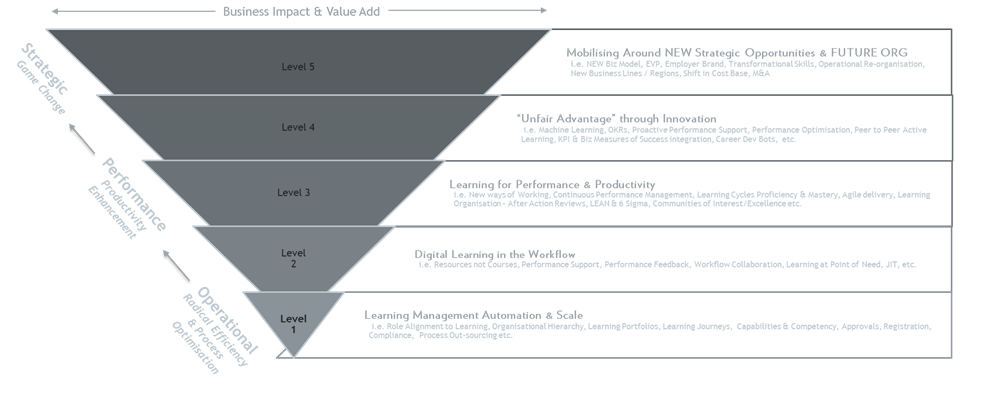Building an Effective Content Creation Strategy – Part 1
Digital learning is the new normal. Regardless of industry, subject, and context, learning technology now plays a central role in the learning experience from soft skills to technical skills, process, and product training and inevitably for regulatory compliance, to mention but a few. Its reach is everywhere.
But, as learning teams begin to dig deeper into what is possible with digital learning tools and techniques, what makes an effective content creation strategy remains a challenge. This two-part article explores four steps to building an effective content creation strategy. In part one, we explore the drivers for a learning content strategy and how and where content can support operational performance.
Connect with the WHY?
It’s easy to get seduced by tools and techniques, but the main driver of your learning content strategy should always be the why. What is the value add of your project to the organization, and what key results should it contribute to? The greater the value, the more investment you might need to seek from stakeholders to ensure you can achieve it. And the more willing your stakeholders will be in investing both in the resources, money, and time to make sure what you do makes a difference. While it’s not necessarily true that bigger ticket projects need more (money and people) it will help you ringfence the time for learners to participate and for managers to support people’s learning.
Part of this understanding of value will come from being laser focused on the value you are enabling. Short or longer-term value will often fall out from transformation projects which in isolation or in combination become your predictable drivers of learning. These include the introduction of new systems, new starters, new products, new markets, regulatory compliance, continuous improvements, new role promotion, new sector innovations, new processes, new performance opportunities, and required certifications. But the value will help you prioritize and enable you to think about the timeframe for delivering success. Where timelines are compressed, you may need to think about how you combine readily available off-the-shelf resources and user-generated content to accelerate your solution before you consider creating your own.
Connect with the who, what, where and when (i.e., how soon)
The learning content you enable and facilitate will also be driven by the learner’s context. Is it about learning now for performance today? Or is it about building the knowledge, skills, attitudes and behaviors needed for tomorrow – as part of the transformation of the learner for future work and future competitiveness or simply the foundation of learning as a support for curiosity and a learning culture? Where does the work take place and what is the environment like for learners at work? What risks do they face in learning on the job and what’s their journey to operational performance?

While it’s easy to think about learning course content and resources as the primary medium for learning, it’s helpful to think about how you support the entire journey, not to learning, but to performance and proficiency in the job. That means thinking about content that not only forms part of a program but also transitions into the workplace, specifically, how feedback, performance management, performance support guides, and bite-sized learning resources can form part of a support framework to optimize operational performance. Embrace learning content beyond classic eLearning such as digital adoption support tools, job aids, coaching, and microlearning to keep people topped up with what they need.
We can also think about enabling user-generated content and co-created content, not as a substitute for learning resources, but as a way for people to show what they know as Subject Matter Experts or to inspire others to be involved in the learning content. That’s to say, create active learners, who actively contribute to others actively learning! For example, through day-in-the-life type resources, tips on being a new starter, or how to navigate the culture.





